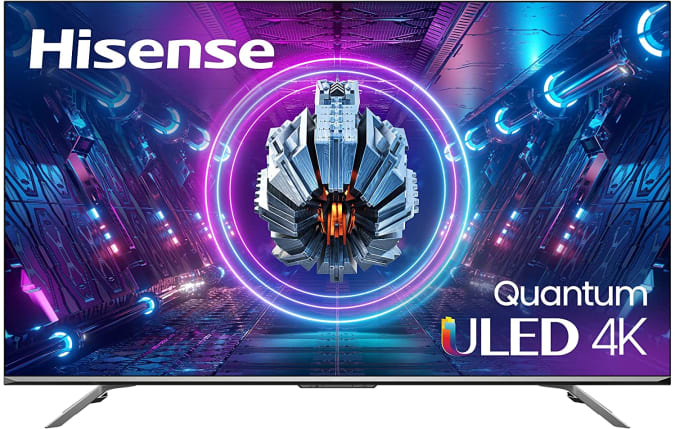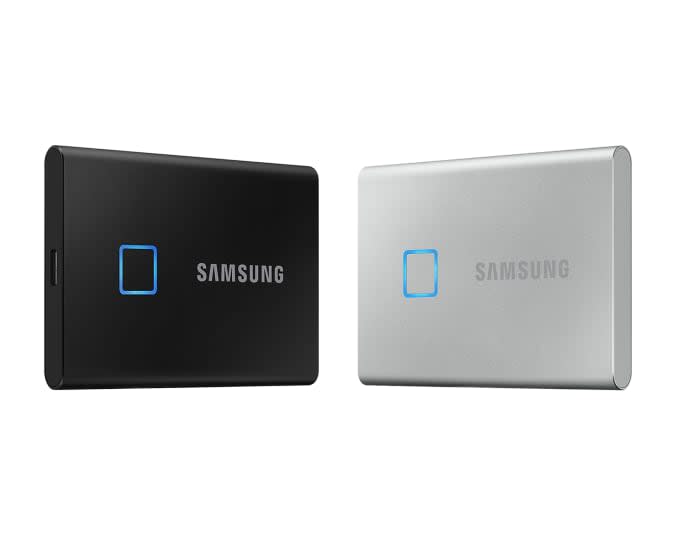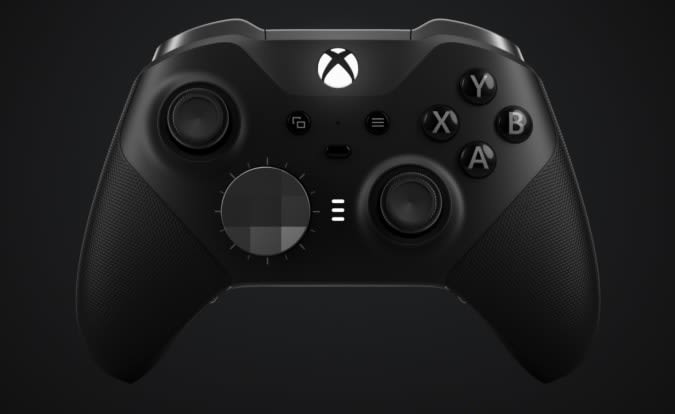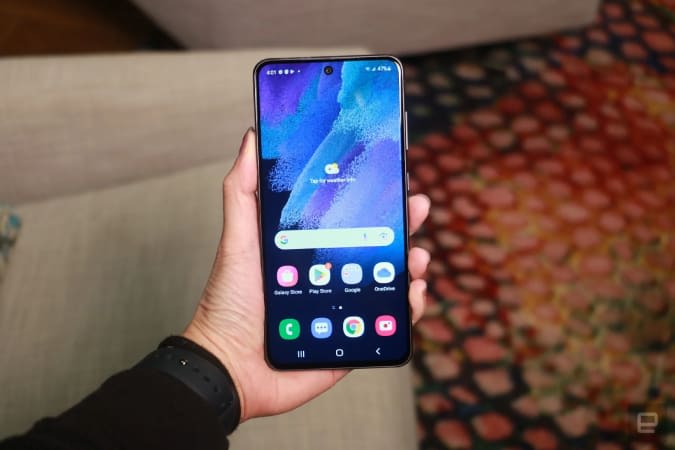Billionaire space barons want to build 'mixed-use business parks' in low Earth orbit
Posted in: Today's ChiliThe Space Race is no longer a competition between the global superpowers of the world — at least not the nation-states that once vied to be first to the Moon. Today, low Earth orbit is the battleground for private conglomerates and the billionaires that helm them. With the Mir Space Station having deorbited in 2001 after 15 years of service and the ISS scheduled for retirement by the end of the decade, tomorrow’s space stations are very likely to be owned and operated by companies, not countries. In fact, the handover has already begun.
“We are not ready for what comes after the International Space Station,” then-NASA-administrator Jim Bridenstine explained at a hearing of the Senate Commerce Committee’s space subcommittee in October. “Building a space station takes a long time, especially when you’re doing it in a way that’s never been done before.”
NASA is on board with this transference, having drafted and published its Plan for Commercial LEO Development (CLD) in 2019, which calls for “a robust low-Earth orbiteconomy from which NASA can purchase services as one of many customers,” as part of the Human Exploration and Operations Mission Directorate at Johnson Space Center. The CLD plan lays out the agency’s necessary steps towards establishing a commercial space station ecosystem. These start with allowing private corporations “to purchase ISS resources,” i.e. lease space on the station for commercial activities, “allow companies to fly private astronauts to the ISS,” which SpaceX did last April, as well as initiating “a process for developing commercial LEO destinations” and working to “stimulate demand” for those destinations and services.
“NASA by its very nature is an exploration agency,” the space agency wrote in 2019. “We like to challenge the status quo and discover new things. We like to solve impossible problems and do amazing things. NASA also realizes that we need help and do not know everything. We can only accomplish amazing things by teamwork. NASA is reaching out to the US private sector to see if they can push the economic frontier into space.”
Space exploration has been a public-private cooperative effort since the founding days of NASA. For example, the expendable launch vehicles that put satellites into LEO from 1963 to 1982 — the Titan by Martin Marietta, the Atlas from General Dynamics, McDonnell Douglas’ Delta rockets, and the Scout from LTV Aerospace Corporation — were all built by private aerospace companies as federal contractors but operated by the US government. “The US government essentially served as the only provider of space launch services to the Western world,” wrote the FAA. This changed in the ‘70s when the European Space Agency developed its own ELV, the Ariane, and NASA swapped out its own rockets for the Space Shuttle program, which became the nation’s default satellite launch system.
Private space launches, like what SpaceX and Northrop Grumman do, got their start in the US way back in 1982 when Space Services sent up its Conestoga rocket prototype, really the repurposed second stage of a Minuteman missile. The size, number and severity of hoops the company had to jump through to get launch clearance was enough to convince members of congress to introduce legislation streamlining the process, eventually leading then-President Ronald Reagan to declare expanding private sector involvement in civil space launches to be “a national goal.” We’ve seen a number of notable milestones in the decades since including the launch of the Pegasus rocket operated by the Orbital Sciences Corporation in 1990, which was the first fully privately developed and air-based launch vehicle to reach space, Dennis Tito’s ride aboard a Soyuz rocket to the ISS in 2001 to become the Earth’s first space tourist, and the first SpaceX Dragon Capsule mission in 2010, the first time a privately-operated spacecraft was both launched into and recovered from orbit.
The idea of letting private space companies build, launch and operate their own stations grew largely from these earlier cooperative arrangements as well as from partnerships made via the International Space Station US National Laboratory, which is managed by the non-profit organization, the Center for Advancement of Science in Space.
“We leverage our core competencies, facilitate public-private partnerships, and utilize the platform capabilities and unique operating environment of the space station,” the ISSNL’s mission statement reads. ”We create demand, incubate in-space business ventures, provide access for and awareness of fundamental science and technological innovation, and promote science literacy of the future workforce.” More than 50 companies have already partnered with the ISSNL aboard the space station and the agency is currently working with 11 others to “install 14 commercial facilities on the station supporting research and development projects for NASA.”
Axiom’s ISS-grown space station
At the forefront of this commercialization effort is the Axiom Space corporation. The Houston-based company has been contracted by NASA to construct a habitat module for the ISS, install it aboard the station in September of 2024 and then detach the module for use as an independent space platform once the ISS is eventually deorbited by 2028.
“Axiom’s work to develop a commercial destination in space is a critical step for NASA to meet its long-term needs for astronaut training, scientific research and technology demonstrations in low-Earth orbit,” NASA’s Bridenstine, said in a 2020 statement.
“We are transforming the way NASA works with industry to benefit the global economy and advance space exploration,” he added. “It is a similar partnership that this year will return the capability of American astronauts to launch to the space station on American rockets from American soil.”
Axiom has tapped Thales Alenia Space to build both the module itself and a meteoroid shield for the Axiom Node One (a pressurized segment that will connect the Axiom hub onto the ISS).
“The legacy of the International Space Station structure is one of safety and reliability despite huge technical complexity,” Axiom Space CEO, Michael Suffredini, said in a 2020 statement. “We are thrilled to combine Axiom’s human spaceflight expertise with Thales Alenia Space’s experience to build the next stage of human settlement in low Earth orbit from a foundation that is tried and tested.”
Axiom has also struck a deal with SpaceX to ferry four “Axionauts” — yes, that’s really what they’re calling them — up to the ISS to train for life in microgravity. The 8-day mission, dubbed Ax-1, was supposed to be led by former NASA astronaut Michael Lopez-Alegria, who would be joined by a trio of space tourists, each of whom shelled out $55 million to ride along. The trip was originally slated to take place in February, however, it was repeatedly delayed due to “additional spacecraft preparations and space station traffic” and is currently scheduled to take place on March 30th. The company is already at work on missions Ax-2 through -4 and has reserved a set of Dragon capsules, though the crew manifests have not yet been finalized.
In addition to the crew habitat, Axiom is building a secondary commercial capsule for Space Entertainment Enterprise (SEE), a startup co-producing Tom Cruise’s latest joint which will be shot at least partially in space later this year. The SEE-1 is scheduled for installation in December, 2024 and will host both a production studio and — somehow — a sports arena as well. Bring on the Battle Rooms.
Nanoracks’ Starlab
While Axiom Space is trying to bud its orbital platform from the ISS like a polyp, space service company Nanoracks is working to build a free-flying station of its own, with help from Voyager Space and Lockheed Martin, as well as a $160 million CLD contract from NASA. That contract runs through 2025 and “will be supplemented with customer pre-buy opportunities and public-private partnerships,” per a recent Lockheed press release.
Nanoracks is already deeply involved in commercial ventures to, from and on the ISS. Founded in 2009, the company has delivered some 1,300 research payloads and small satellites to the station and currently rents space for research modules aboard its Nanoracks External Platform on the outside of the ISS. Its wide-bore Bishop airlock was the first permanent commercial addition to the ISS.
The company is developing a line of smaller self-contained orbital platforms, dubbed Outposts, which could serve a variety of purposes from refueling stations for satellite constellations, to cubesat launchers and advanced technology testbeds to hydroponic greenhouses. The first iteration is expected to be launched by 2024.
The Starlab itself, which should be ready for business by 2027, will consist of an inflatable 340 cubic meter habitat built by Northrop (similar to the Bigelow Expandable Activity Module, or BEAM, that was demonstrated on the ISS in 2016) that can accommodate up to four crew members simultaneously. Four solar panels will generate 60 kW of power for the station to use.
With just under half the usable interior space as the ISS, Starlab’s operations will be centered around its cutting-edge George Washington Carver (GWC) Science Park which includes a biology lab space, plant habitation lab, materials research lab and an unstructured workbench area enabling the station to offer services ranging from fundamental research and astronaut training to space tourism. However, tourists will take a backseat to scientific endeavors aboard the station. “Space tourism is what captures the headlines, but to have a sustainable business model, you really do need to move beyond that,” Nanoracks CEO Jeffrey Manber told TechCrunch last October.
Blue Origin’s Orbital Reef
With the “pay NASA to pay us to ferry Artemis gear to the moon” plan having been thoroughly imploded by the US federal court system, Jeff Bezos’ Blue Origin has set its sights on a goal slightly closer to Earth. The space launch and tourism company has partnered with Sierra Space to build, launch and operate a “mixed-use business park” in space, dubbed Orbital Reef.
The 830 cubic meter structure is still in its early planning stages, having garnered a $130 million Space Act contract from NASA last December for its development, and isn’t expected to launch until at least the second half of the 2020s. Few other details have yet been confirmed.
“Now, anyone can establish an address in orbit,” Blue Origin declared last October when unveiling the project. “Orbital Reef expands access, lowers the cost and provides everything needed to help you operate your business in space.” This from the company that got $28 million for a single seat aboard last year’s inaugural New Shepard flight.
Northrop Grumman’s Cygnus-based space station
NASA’s third Space Act agreement recipient from last December is defender contractor Northrop Grumman, which plans to repurpose one of its existing Cygnus spacecraft for use as an orbital station.
Like Orbital Reef, Northrop’s as-of-yet unnamed design is still in its earliest stages of development, though the company does expect the new station to accommodate up to four permanent crew members once it does initiate operations and could at least double that number as the station is expanded throughout its estimated 15-year service life.
Under the terms of the $125 million agreement, “the Northrop Grumman team will deliver a free-flying space station design that is focused on commercial operations to meet the demands of an expanding LEO market,” Steve Krein, vice president of civil and commercial space at Northrop Grumman, said in a statement last December. “Our station will enable a smooth transition from International Space Station-based LEO missions to sustainable commercial-based missions where NASA does not bear all the costs, but serves as one of many customers.”
Of course, the US and its commercial constituents are far from the only parties interested in colonizing LEO for business interests. China launched the Tianhe core module of its new 3-crew member Tiangong space station into orbit this past April with the remaining Experiment Modules and separate space telescope going up between this year and 2024. Similarly, India’s space agency is developing a station of its own with plans to launch it by the end of the decade, following the country’s upcoming Gaganyaan mission, the first crewed orbital spacecraft to launch as part of the Indian Human Spaceflight Programme.
These propositions are only the start of humanity’s expansion into the stars from low Earth orbit, to the Lunar Gateway, to Mars and beyond. But the question isn’t so much of when and how we’ll do so, but rather, who will be able to afford to?












